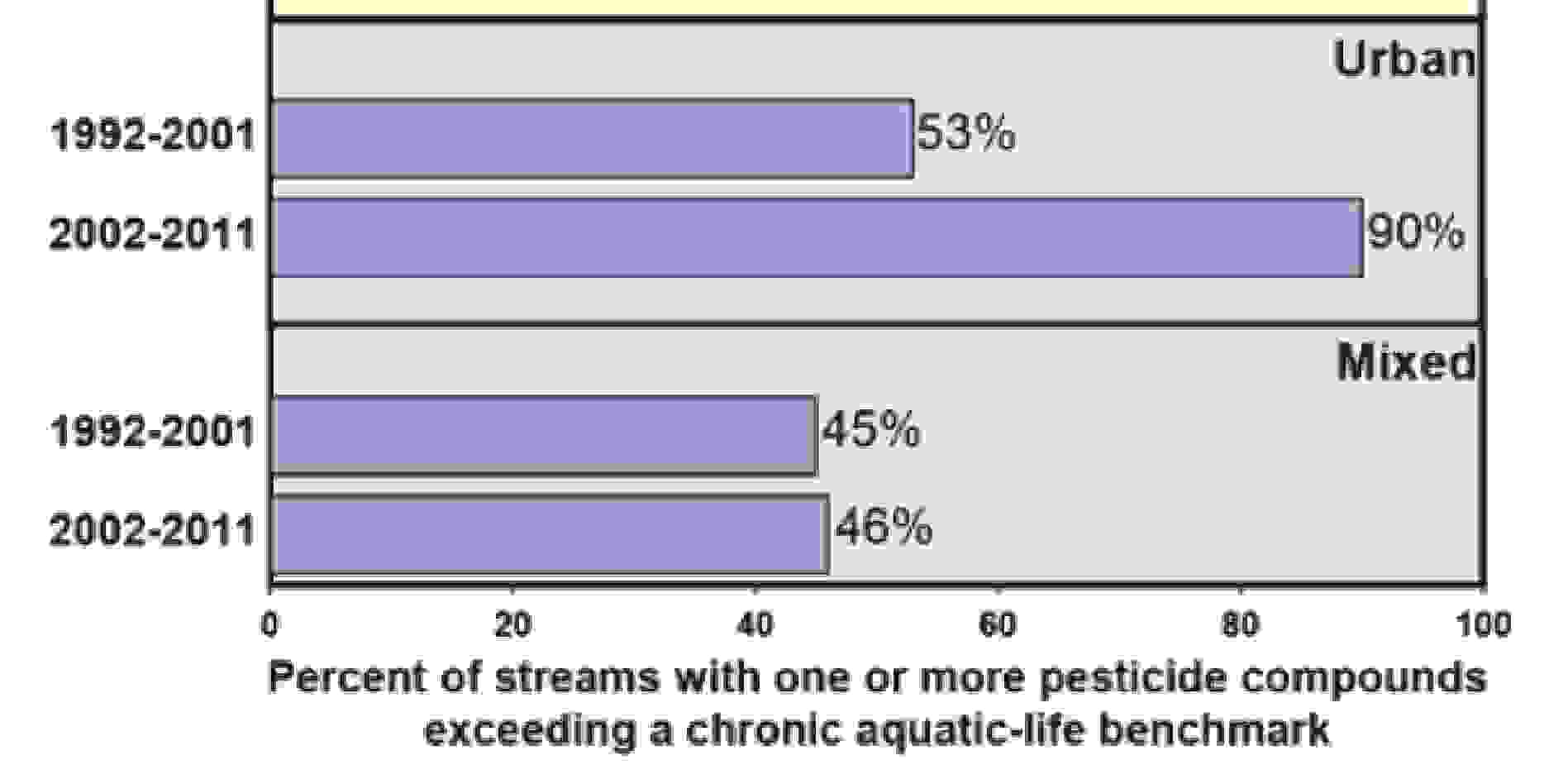Levels of pesticides continue to be a concern for aquatic life in many of the nation’s rivers and streams in agricultural and urban areas, according to a new U.S. Geological Survey (USGS) study spanning and comparing two decades (1992–2001 and 2002–2011). However, the pesticide levels seldom exceeded human health benchmarks.
Over half a billion pounds of pesticides are used annually in the United States to increase crop production and reduce insect-borne disease, according to USGS, but some of these pesticides are occurring in water at concentrations that pose a concern for aquatic life.
In streams and rivers draining agricultural and mixed land-use areas, the number of streams with one or more pesticides that exceeded an aquatic-life benchmark was fairly similar between the two decades, but in streams draining urban areas that number was much higher in 2002–2011.
“The information gained through this important research is critical to the evaluation of the risks associated with existing levels of pesticides,” said William Werkheiser, USGS associate director for water.
Since 1992, there have been widespread trends in concentrations of individual pesticides, some down and some up, mainly driven by shifts in pesticide use due to regulatory changes, market forces, and introduction of new pesticides.
“Levels of diazinon, one of the most frequently detected insecticides during the 1990s, decreased from about 1997 through 2011 due to reduced agricultural use and the U.S. Environmental Protection Agency’s regulatory phase-out of urban uses,” said Wesley Stone, USGS hydrologist.
The potential for adverse effects on aquatic life is likely underestimated in these results, according to USGS, because resource constraints limited the scope of monitoring to less than half of the more than 400 pesticides currently used in agriculture each year and monitoring focused only on pesticides dissolved in water.
The USGS National Water-Quality Assessment Program is continually working to fill these data gaps by adding new pesticides that come into use, such as the neonicotinoid and pyrethroid insecticides, improving characterization of short-term acute exposures, and enhancing evaluations of sediment and other environmental media.
The study, “Pesticides in U.S. Streams and Rivers: Occurrence and trends during 1992–2011,” was published in Environmental Science and Technology and is available online. Read the full USGS news release for more information.

